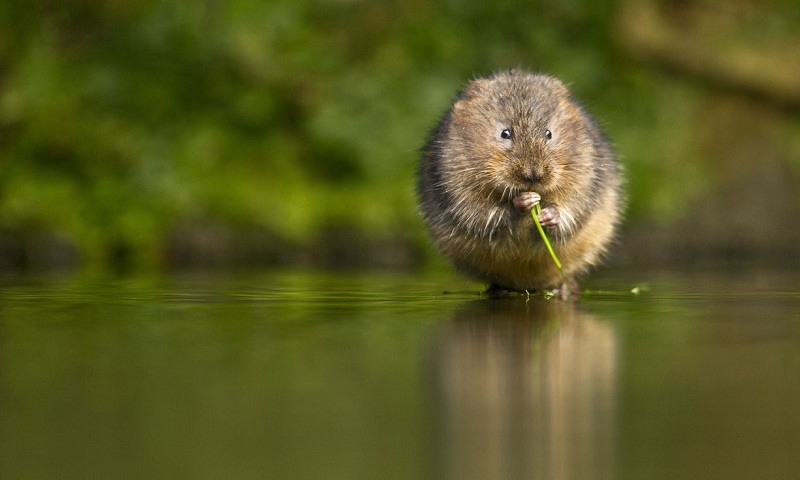Ratty returns: hundreds of water voles released in UK’s biggest reintroduction

Almost 700 of the endangered rodents, immortalised in Wind in the Willows, will be released in Northumberland – and it’s all thanks really to the otter. The biggest reintroduction of water voles in the UK began this week, with 325 voles released into Kielder Forest in Northumberland, and 350 more to follow later in the summer. Water voles hold a special place in Britain’s natural history, providing the model for Ratty, the much-loved character in The Wind in the Willows. But the species has suffered catastrophic declines over several decades, driven by loss of habitat, the pollution of waterways, increased urbanisation, and rampant populations of American mink, originally farmed for their fur but which escaped into the wild and proved a voracious predator on the native vole. More than 90% of the water vole population across the UK has died out, making it the country’s fastest declining land mammal. Kielder Forest, more than 650 sq km in extent, was once a stronghold of the water vole, but none have been seen there in more than two decades, owing to the prevalence of mink. By a curious quirk of conservation, “Ratty” owes the reintroduction in the area to the revival of another water vole predator: the otter. Burgeoning otter populations in Kielder, generations of which have been carefully nurtured through conservation efforts, have displaced the rival mink, which tends not to share hunting grounds with otters. The reintroduction in Kielder Water and Forest Park has only taken place following comprehensive surveys for mink carried out since 2013. The Kielder Water Vole Partnership said it was confident the mink had permanently gone, making the habitat safe. As well as the otter, other native predators such as foxes, stoats, weasels and owls can all be found at Kielder, but these predations are likely to be kept in natural balance as the voles increase their range. Water voles eat grasses, reeds, sedges and other food abundant in the area, and the habitat is well suited for them to re-establish themselves along the existing waterways. The Forestry Commission has also helped by adapting its practices to allow wildlife to flourish, for instance by leaving open areas by the waterside where trees have been felled. The prospects for the reintroduced water vole look good: a separate reintroduction in streams around Malham Tarn in the Yorkshire Dales last August has resulted in the mammals spreading as much as a kilometre from the original site, and showing up on the lake for the first time in 50 years. A further 100 were released there at Easter by the National Trust. Eventually, it is hoped the animals will spread across the north Tyne catchment dominated by Kielder Forest, and into western Northumberland. The Restoring Ratty project was funded with a grant of £421,000 over five years from the Heritage Lottery Fund, and is run by the Northumberland Wildlife Trust, the Forestry Commission and Tyne Rivers Trust.

